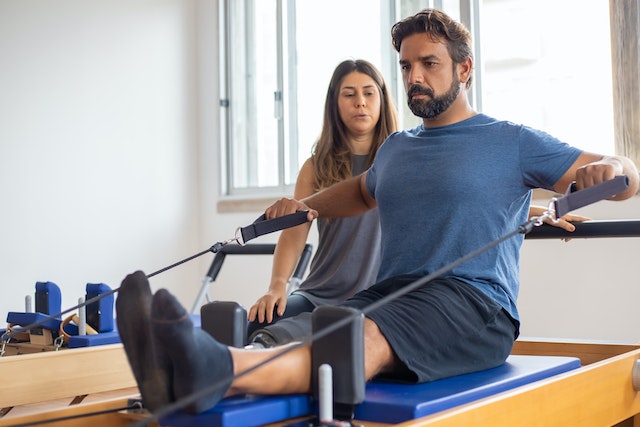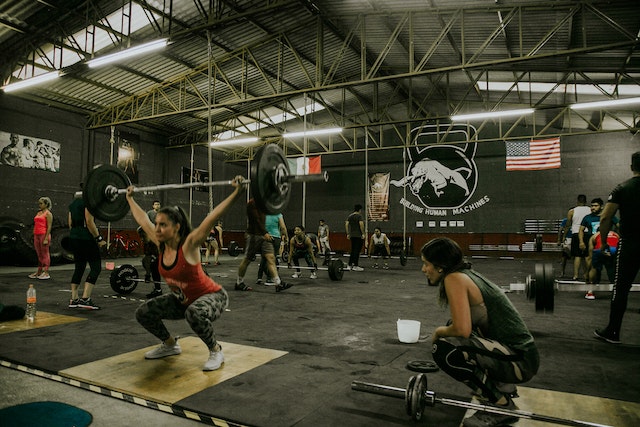Physical therapy is the use of exercise and physical activities to help condition muscles and restore strength and movement to an individual. It helps in the rehabilitation of injuries and ensures that an athletically-active person can continue their pursuits with minimal disruptions. Physical therapy in Denver can be helpful to an athlete in several ways, from preventing injuries to speeding up the recovery time of an injury.
A poor or favorable relationship with physical therapists is one support from athletic trainers that was found to be vital. For an athlete who needs an edge in competitions, training hard requires extra help. It is necessary for an athlete in sports, just like in medicine, to have a physical therapist. A physical therapist in sports is a diagnostician who assesses body movement, provides accurate injury diagnosis, considers the risk factor even for the future, and after these, makes plans for personal treatment. An athlete and a physical therapist are like a car with a mechanic who ensures that the light is intact, that there is no case of unusual noise, and the engine works perfectly. The therapist conducts and examines the features and behavioral patterns of an athlete that will help strengthen and retrain the muscle and movement of the individual. He looks out for:
- The history/cause of the injury
- The challenges and the goals of the patient
- Assess the tissue or joint that is injured
- Examine and measure how well the joint/muscle can move
- Examine how strong the supporting muscles responsible for completing the movement are.
Why Is Physical Therapy Beneficial To Athletes?
In physical therapy, trained professionals evaluate and treat abnormal physical function related to an injury, disability, or other health condition. Depending on the reason for treatment, the benefits of physical therapy may include:
Improving Flexibility
An athlete usually participates in sports that require good motion and flexibility. The joint’s ability to move effectively through various actions determines how flexible an individual is. Physical therapy helps improve one’s flexibility, which will not result in hyper-flexibility of the muscle, which can lead to sustaining injury.
During physical therapy, the target is particularly; the muscles, exercises, and treatments that are expected to improve an athlete’s flexibility to reach their full potential.
Faster Recovery Time
Injuries cannot be avoided for active athletes; this is why physical therapy helps an individual to recover quickly from injuries. Rehabilitation programs are set up according to specific injuries. The therapist can also customize these programs. It ensures a rapid range in motion, reduces pain and restores strength. The result enables the athlete to return quickly to the playing field by limiting the extent of the injury. The stages of rehabilitation in sports injuries include:
- Reducing pain and swelling
- Restoring joint mobility and range of motion
- Restoring muscle strength and endurance
- Recovering coordination
- Recovering movements specific to a sport
- Returning to the sport.
Improving Physical Wellbeing
The essence of physical therapy does not only revolve around athletes. It is suitable for everyone who wants to live healthily. Having a physical therapist encourages an individual to take care of their body better by making healthy decisions. Therapies could include; developing proper exercise habits, learning how to stretch, eating healthy food, etc. Taking up these healthy habits/ activities can lead to improved wellbeing.
Increasing Physical Strength
Most athletes require ways to maintain and increase strength for outstanding performances. The importance of these therapies is that it helps you strengthen your muscles, ligament and joints, which generally leads to increased physical strength. It enables an individual’s ability to endure high stress for some time during games or matches.
Preventing Athletic Injuries
Injuries such as dislocation of joints, sprain in the muscle, ligament, fractures, tendon tears and sometimes head injuries are usually common with athletes. This could result from insufficient warm-up activities, lack of proper equipment, inadequate training methods, etc.
Injuries prevent athletes from performing optimally. The benefit of physical therapy, in this case, is that it educates athletes on various techniques that should be taken into consideration in order to avoid injuries. These could include:
- How to warm up, cool down, and stretch effectively
- How to maintain good form while conditioning
- Ensuring rest and healthy nutrition
- Evaluating when it’s safe to return to the game.
Improving Balance
Balance is an essential aspect of any sport, and it’s one that physiotherapy can help with. Poor balance can lead to injuries, and it can also hinder performance. Physical therapy can help athletes improve in this area through exercises that challenge balance and coordination. This can lead to better on-field performance and a reduced risk of injury.
Avoiding The Need For Surgery
Physical therapists help people manage pain and improve movement problems. Some pain and movement problems can become chronic and lead to surgery.
Physical therapy helps to reduce the symptoms of many chronic diseases and conditions. It also can keep many problems from getting worse. Physical therapists can help you avoid the need for and the costs and risks of surgery.
Research shows that physical therapy is as effective as surgery for some conditions, including:
- Meniscal tears and knee osteoarthritis
- Rotator cuff tears
- Spinal stenosis
- Degenerative disk disease

Types Of Physical Therapy For Athletes
Sportsmetrics™
This is a program designed for the prevention of injuries in athletes of all levels. The program begins with a detailed evaluation of the client, including jump testing and a physical therapy evaluation, consisting of strength testing, range of motion measurements, and a full body screening. The jump analysis will be conducted by our licensed physical therapist, certified in the Sportsmetrics program, and the results will be discussed in detail with the client. The Sportsmetrics™program is six weeks long and consists of a series of jumping plyometric drills with proper instruction and teachings on the appropriate and safe way to land to decrease the risk for ACL injuries(A torn anterior cruciate ligament in the knee. The ACL is the tissue that connects the thigh bone to the shinbone at the knee. Most ACL injuries occur during sports such as basketball, football, skiing and tennis).
In addition to the jumping drills, clients will be provided additional physical therapy, strength training and manual treatment. Not only does the Sportsmetrics program help to reduce the risk of injury, but it can also enhance athletic performance.
Exercises/Corrective Exercises
This physical therapy program is designed to improve strength and flexibility, range and motion, and an individual’s balance. It can be achieved with the help of a physical therapist.
It is known that participating in exercise has several health benefits both to the mental and physical well-being of the individual, besides weight management.
Corrective exercises primarily target faulty movements that can cause pain or injury. They are designed to guide individuals through a customized exercise program to fit their specific needs. These exercises help the individual find relief from pain without medication.
Massage Therapy
It improves blood flow, relieves muscle tension, and reduces inflammation. It is developed to help with muscle systems used for a particular sport; sports massage uses a variety of approaches to help athletes in training; before, during, or after sports events. It is used to promote flexibility and help prevent injuries. Or, it may help muscle strains, aiding healing after a sports injury.
Rest
Devoting time to rest is essential and non-negotiable for an athlete. Lack of proper recovery can prevent an individual from reaching an estimated goal. It also decreases the performance of an athlete. Rest and recovery are underappreciated and underutilized training variables critical to optimal performance and injury prevention.
Physical Therapy For Athletes
Anyone who has suffered an injury or has some physical disability or limitation can benefit from physical therapy, as it supports the body in healing. It results in outstanding athlete performance while maintaining a healthy life. For athletes, it is seen as an essential element of health care. It is directed at improving pain, mobility, and the ability to perform daily tasks and recreational activities with minimal complications, movement impairment or restrictions.
Athletes who frequently experience pain should seek the help of a physical therapist. With hard work and dedication from the athletes and therapists, recovery can be achieved.



